Rohingya Refugee Crisis Explained
 In August 2017, armed attacks, massive scale violence, and serious human rights violations forced thousands of Rohingya to flee their homes in Myanmar’s Rakhine State. Many walked for days through jungles and undertook dangerous sea journeys across the Bay of Bengal to reach safety in Bangladesh. Now, nearly 1 million people have found safety in Bangladesh with a majority living in the Cox Bazar’s region - home to the world’s largest refugee camp. The United Nations has described the Rohingya as “the most persecuted minority in the world.”
In August 2017, armed attacks, massive scale violence, and serious human rights violations forced thousands of Rohingya to flee their homes in Myanmar’s Rakhine State. Many walked for days through jungles and undertook dangerous sea journeys across the Bay of Bengal to reach safety in Bangladesh. Now, nearly 1 million people have found safety in Bangladesh with a majority living in the Cox Bazar’s region - home to the world’s largest refugee camp. The United Nations has described the Rohingya as “the most persecuted minority in the world.”
Here’s What You Need to Know:
1. Who are the Rohingya?
2. How did the Rohingya refugee crisis begin?
3. Where are the Rohingya seeking refuge?
4. How does the monsoon season impact Rohingya refugees in Bangladesh?
5. What is happening to Rohingya refugees in Bangladesh right now?
6. How is UNHCR supporting Rohingya refugees?
Who are the Rohingya?
The Rohingya are a Muslim ethnic minority group who have lived for centuries in predominantly Buddhist Myanmar - formerly known as Burma. Despite living in Myanmar for many generations, the Rohingya are not recognized as an official ethnic group and have been denied citizenship since 1982, making them the world’s largest stateless population.
As a stateless population, Rohingya families are denied basic rights and protection and are extremely vulnerable to exploitation, sexual and gender-based violence (SGBV) and abuse.

How did the Rohingya refugee crisis begin?
The Rohingya have suffered decades of violence, discrimination and persecution in Myanmar. Their largest exodus began in August 2017 after a massive wave of violence broke out in Myanmar’s Rakhine State, forcing more than 742,000 people - half of them children - to seek refuge in Bangladesh. Entire villages were burned to the ground, thousands of families were killed or separated and massive human rights violations were reported.

Where are the Rohingya seeking refuge?
More than 1.3 million people were displaced within Myanmar in 2023 due to escalating violence following the military takeover in February 2021. By the end of 2023, there were more than 2.6 million internally displaced people (IDP) in the country. An additional 1.3 million refugees and asylum seekers from Myanmar are hosted in other countries, including nearly 1 million stateless Rohingya refugees who are living in Bangladesh. Most are settled in and around Kutupalong and Nayapara refugee camps in Bangladesh’s Cox’s Bazar region — some of the largest and most densely populated camps in the world.
Humanitarian aid is critical, with 95 percent of Rohingya households in Bangladesh dependent on humanitarian assistance. More than half of the refugees in the camps are under 18 and have limited opportunities for education, skills-building and livelihoods. Rohingya refugees are risking their lives on dangerous sea routes to Indonesia and Malaysia, which have been described as among the deadliest in the world. In 2023, one Rohingya died or went missing for every eight who attempted the journey.
More than 75 percent of the refugee population are women and children. The current refugee population accounts for one-third of the total population in the Cox’s Bazar region, making support to host communities essential for peaceful coexistence.
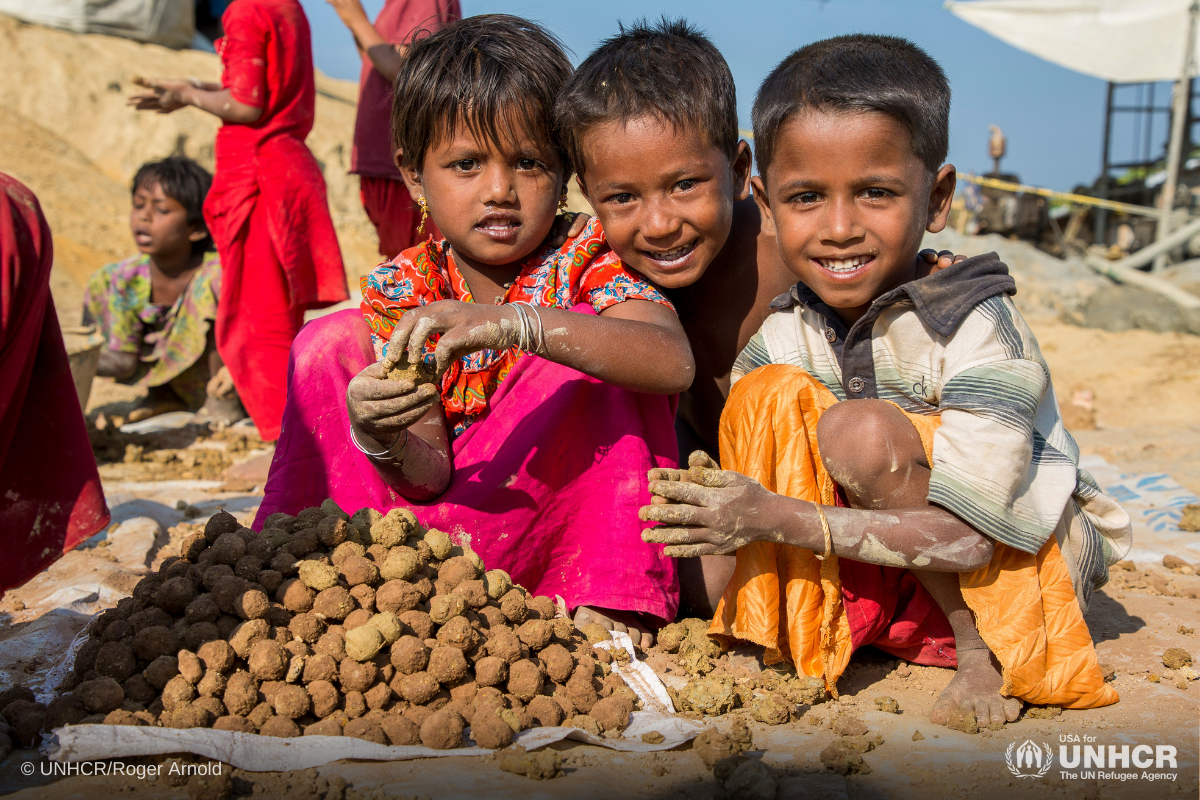
Learn more about life inside Kutupalong refugee camp
Since 2021, to decongest the 33 camps in Cox’s Bazar, nearly 30,000 refugees have been relocated to Bhasan Char island by the Government of Bangladesh. While protection services and humanitarian assistance have been scaled up on the island, significant gaps remain in service delivery and the sustainability of critical assistance.
Rohingya refugees have also sought refuge in other nearby countries like Malaysia (168,400), India (93,100), Thailand (84,000) and other countries across the region.
Armed clashes across Myanmar have continued to trigger displacement, bringing the total number of internally displaced people (IDP) within the country to more 2.6 million by the end of 2023 — including 1.3 million whom have been internally displaced since February 2021.
How does the monsoon season impact Rohingya refugees in Bangladesh?
The monsoon season runs from June to October each year and brings heavy rainfall and strong winds to Bangladesh, increasing the risk of floods and landslides. Hundreds of thousands of Rohingya have found refuge in flimsy shelters made of bamboo and tarp which have been built in areas prone to landslides, which may not stand torrential rains and heavy winds.
The rainy season also exacerbates the risk of disease - such as hepatitis, malaria, dengue and chikungunya - in crowded camps that don’t have proper water and sanitation facilities, putting children and the elderly at particular risk.
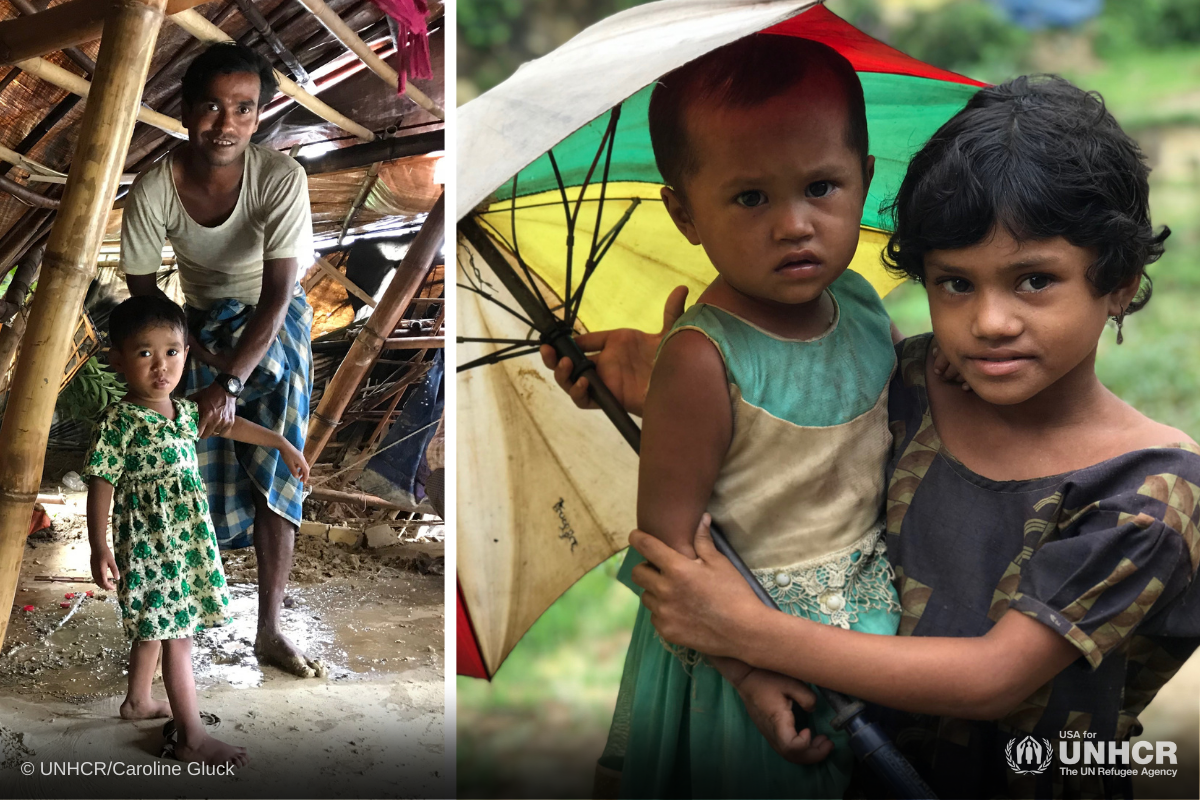
What is happening to Rohingya refugees in Bangladesh right now?
In May 2023, Cyclone Mocha struck Bangladesh and Myanmar, the most severe storm to hit the region in recent years, causing widespread destruction. Cyclone Mocha had a devastating impact on homes, infrastructure and millions of people across Bangladesh and Myanmar. The storm impacted 2.3 million people in Bangladesh, including 930,000 Rohingya refugees.
With the monsoon rains starting soon after, residents of the camp have attempted to rebuild as best they can before the rainy season reaches its peak. But only a fraction of damaged and destroyed shelters have been repaired, and thousands of people remain exposed to the elements.
UNHCR and its partners, along with government agencies, are on the ground to provide emergency relief to the affected communities. Rapid assessments are ongoing. The immediate priorities include the provision of emergency shelter, clean drinking water, food supplies and ensuring access to health and sanitation facilities.

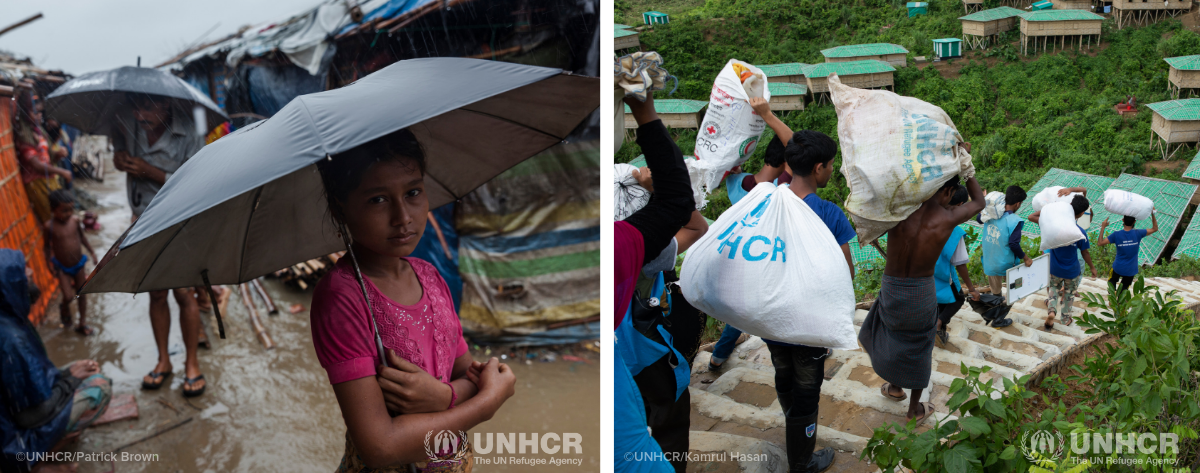
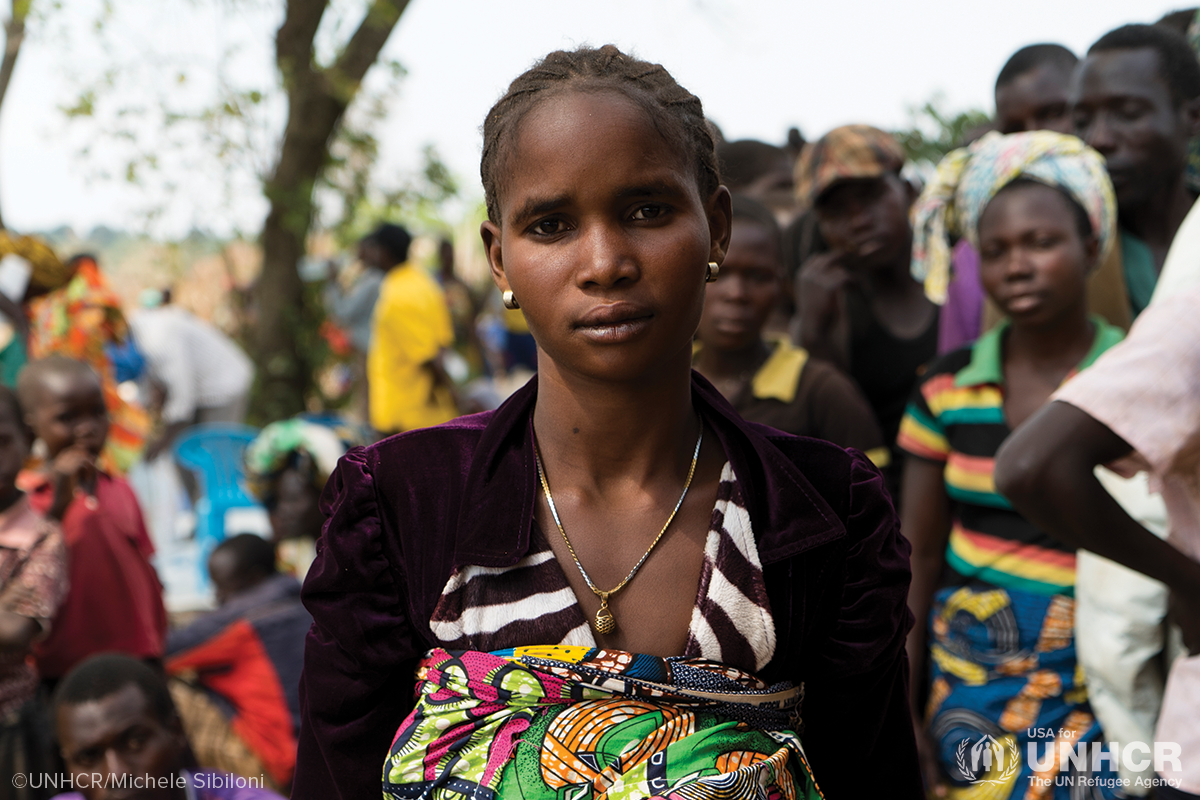 How is UNHCR supporting Rohingya refugees?
How is UNHCR supporting Rohingya refugees?
Rohingya refugees lack legal status and livelihood opportunities, and their movements outside the camps are restricted, leaving them entirely dependent on humanitarian assistance and at heightened risk of exploitation and abuse. UNHCR’s activities include registering refugees, providing protection and legal assistance, preventing gender-based violence, ensuring provision of adequate shelter, health care and sanitation, supporting education and skills development, as well as livelihood opportunities and distributing life-saving relief items where needed.
Given the camps and their inhabitants are highly exposed to weather-related hazards such as severe storms like Cyclone Mocha, or to fires, flooding and landslides, UNHCR also works to protect and mitigate against such dangers. Underfunding directly affects the successful implementation of climate actions, in particular the provision of liquefied petroleum gas to refugees as a clean and reliable source of energy for cooking, and one which protects women and children from long and dangerous daily treks to collect firewood.
UNHCR continues to engage in political dialogue on their voluntary repatriation. Until safe and dignified returns are possible, Bangladesh and the Rohingya refugees will require sustained and adequate financial support to ensure they can live safely.
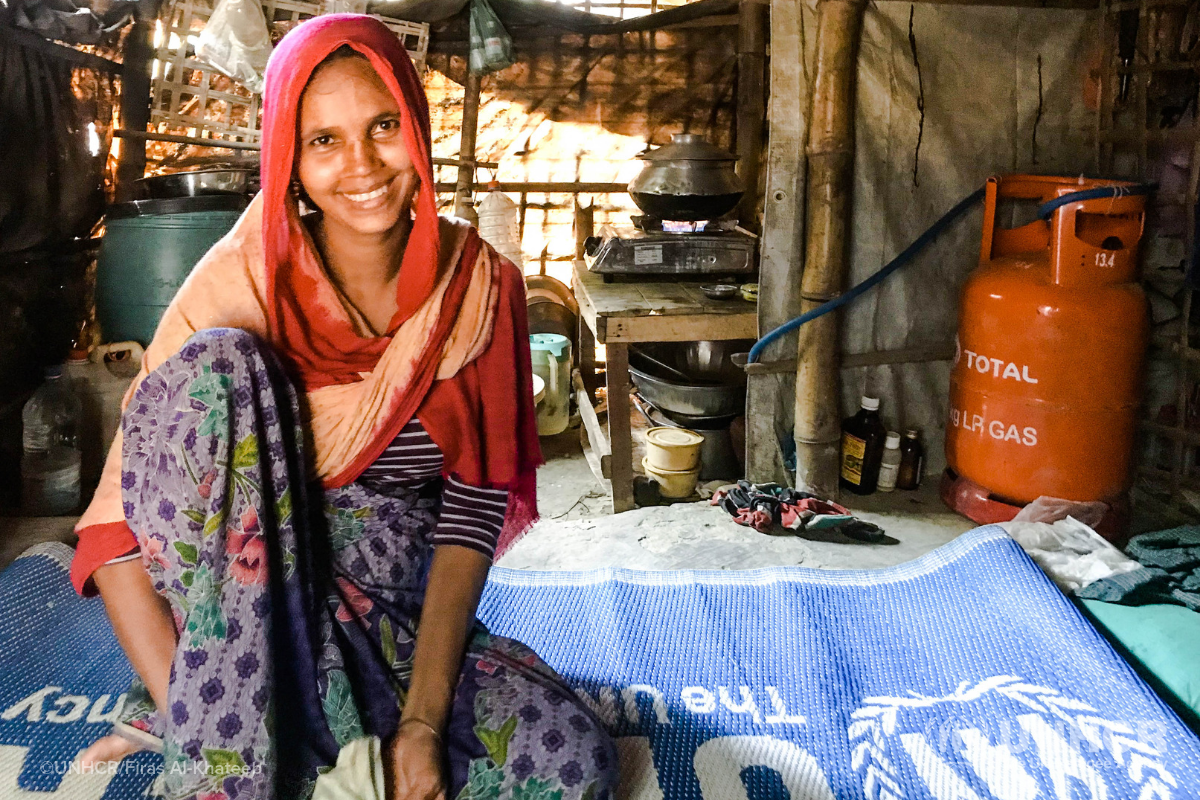
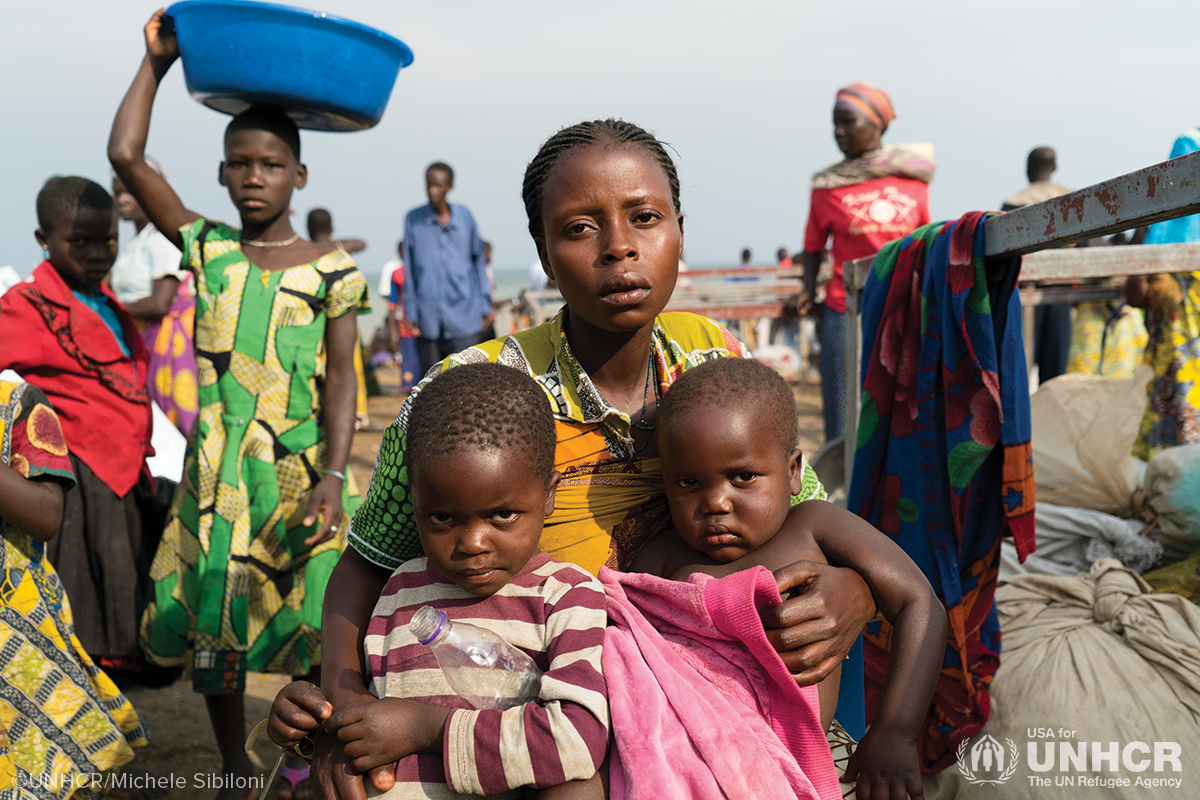
Rohingya refugees in Bangladesh need your help…
UNHCR is on the ground providing lifesaving humanitarian support to hundreds of thousands of Rohingya refugees. However, they need your help. Becoming a monthly donor is the most efficient and effective way to help those fleeing conflict. Make a difference in the lives of refugees by becoming USA for UNHCR’s newest monthly donor.


